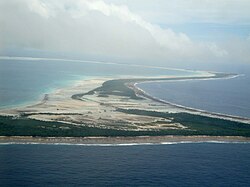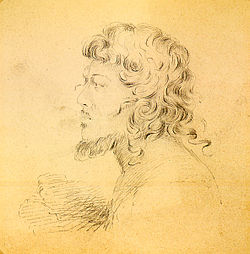 Map of Butaritari | |
 | |
| Geography | |
|---|---|
| Location | Pacific Ocean |
| Coordinates | 3°10′04″N172°49′33″E / 3.16778°N 172.82583°E |
| Archipelago | Gilbert Islands |
| Area | 13.49 km2 (5.21 sq mi) |
| Highest elevation | 3 m (10 ft) |
| Administration | |
| Largest village | Taubukinmeang |
| Demographics | |
| Population | 3,224 (2015 Census) |
| Pop. density | 322/km2 (834/sq mi) |
| Ethnic groups | I-Kiribati 90.6% |
Butaritari is an atoll in the Pacific Ocean island nation of Kiribati. The atoll is roughly four-sided. The south and southeast portion of the atoll comprises a nearly continuous islet. The atoll reef is continuous but almost without islets along the north side. Bikati and Bikatieta islets occupy a corner of the reef at the extreme northwest tip of the atoll. Small islets are found on reef sections between channels on the west side. The lagoon of Butaritari is deep and can accommodate large ships, though the entrance passages are relatively narrow. It is the most fertile of the Gilbert Islands, with relatively good soils (for an atoll) and high rainfall. Butaritari atoll has a land area of 13.49 km2 (5.21 sq mi) and a population of 3,224 as of 2015 [update] . During World War II, Butaritari was known by United States Armed Forces as Makin Atoll, and was the site of the Battle of Makin. Locally, Makin is the name of a separate but closest atoll, 3 kilometres (1.6 nmi; 1.9 mi) to the northeast of Butaritari, but close enough to be seen. These two atolls share a dialect of the Gilbertese language.







